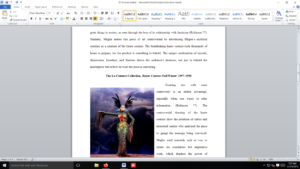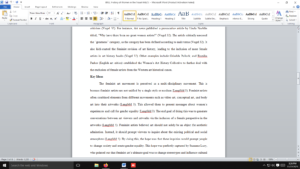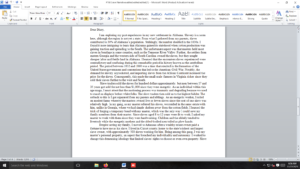Political and religious violence
These are the times that try men’s souls: The summer soldier and the sunshine patriot will, in this crisis, shrink from the service of his country; but he that stands by it now, deserves the love and thanks of man and woman.”
– Thomas Paine, The Crisis
For this discussion we will reflect on both historical and present day examples of migration and expansion caused by political and religious violence that emerged from the wars to control North America, culminating in the American Revolution. In your selected documentary be sure to bridge the gap between historical and present day examples of migration, as well as examining the perspective of the film’s content.
The Thirty Years War in mainland Europe was a conflict on a scale comprisable to the First World War, both in terms of lives lost and the lasting devastation it left behind. During the same period, the English Civil War between Roundhead and Cavalier factions produced series of upheavals that culminated in the execution of Charles I and the establishment of a military dictatorship under Oliver Cromwell. This period of religious and political violence produced one of the largest refugee crises in history, which in turn ended up shaping the dimensions of politics in Colonial America as well as the social, religious, ethnic, and political make-up of North America for centuries to come, culminating in the creation of the United States.
For all writing assignments you are required to do the following:
- Write a 300-500 Word Review of your chosen media.
- After completing your review you are expected to write TWO 100 Word responses to your classmates review, giving feedback, asking questions, and drawing connections between the subjects of your respective posts.
OPTION 1
Read: Davidson, Experience History Volume 1: Interpreting America’s Past (via McGraw Hill Connect)
Chapter 5: The Mosaic of Eighteenth Century America
Chapter 6: Imperial Triumph, Imperial Crisis
Chapter 7: The American People and the American Revolution
For your Chapter Reviews, you are expected to read the selected sections (manually edited by the instructor) that connect to our class lectures and discussions. Using the text as your source, write a 300-500 word short essay that answers any one of the following essential questions* from the Section 2 notes:
- How did the religious, social, and political situation in England during the 1600s influence the settlement of the colonies of North America?
- Describe how the political and religious upheavals of the English Civil War, Restoration, and Glorious Revolution helped to shape both the settlement and social development of Great Britain’s North American colonies.
- Identify moments in the lives and careers of our founding fathers where their loyalties to Britain were first brought into question. What aspects of their experience made it so they felt revolution was necessary?
- What were the major contributing factors that caused the American Revolution to transition from a localized rebellion to a continental revolution? Can you pinpoint one factor or several that helped this along?
- George Washington famously lost more battles than he won during his campaigns in the Revolutionary War. What additional factors helped the Continental Army ultimately defeat the British and gain independence?
*When writing your essay in the discussion thread make sure to do the following:
- If using a direct quote or block of information from the text, make sure to put the name of the textbook editor in parenthesis, followed by a period (Davidson).
- Where possible, use examples from the text to support an historical argument that follows your own interpretation from the reading and ideas of its meaning.
- Do not simply say, “According to the book….” Instead make a statement and then use the book as a resource to help support your answers.
- Discuss what you learned and what you would like to learn more about.
- Where possible, connect at least one idea discussed in class to your review.
- You are welcome – but not required – to challenge the historical perspective presented in the text. If there is something that you feel could be fleshed out more, or a part of the story that seems to be missing, be sure to point it out.
OPTION 2
Write a 300-500 word review on any of the following multimedia sources listed below. Your documentary/podcast review should contain the following:
- A very brief summary (no more than 50 words ) that explains the premise of your chosen media source.
- What did learn from and what you would like to learn more about?
- List at least one blind spot or missed opportunity your source could have addressed.
- Are there places where you believe your source could have given its audience or readers more information?
- Identify at least one instance of bias (a preference toward one point of view over another) that occurred in your chosen resource.
- There will always be occurrences of bias in everything you watch in this class. This is not necessarily a negative, but becoming aware of how a preferred point of view can inform the way a story is told is one of the primary goals of this course.
- Where possible, connect at least one idea discussed in class to your review.
American History Tellers (Listen to First Three Episodes):
The Virginia Planter
The Empire Builder
The Iroquois Diplomat
Tides of History (Listen to Both):
The Rise of Printing and the Invention of News
George Washington and the End of the Revolution
Ben Franklin’s World: Celebrating the Fourth
It wasn’t always fireworks on the Fourth.
John Adams predicted Americans would celebrate the Second of July, the day Congress voted in favor of independence, “with Pomp and Parade, with Shews, Games, Sports, Bells, Bonfires and Illuminations from one End of this Continent to the other.” He got the date wrong, but he was right about the festivities in commemoration of Independence Day. And yet July Fourth events have changed a great deal since 1776. How do our fireworks displays, barbecues, parades, and sporting events compare to the first and earliest celebrations of independence? How and why do we celebrate the United States and its independence as we do?
https://www.benfranklinsworld.
Ben Franklin’s World: Life in Everyday Early America
What would you like to know about Early American History? It turns out, you wanted to know about the establishment of schools, how the colonial postal service worked, and about aspects of health and hygiene in early America.
Roundhead or Cavalier: Which Are You?
In the middle of the 17th century, Britain was devastated by a civil war that divided the nation into two tribes – the Roundheads and the Cavaliers. In this programme, celebrities and historians reveal that modern Britain is still defined by the battle between the two tribes. The Cavaliers represent a Britain of panache, pleasure and individuality. They are confronted by the Roundheads, who stand for modesty, discipline, equality and state intervention.
The ideas which emerged 350 years ago shaped our democracy, civil liberties and constitution. They also create a cultural divide that influences how we live, what we wear and even what we eat and drink. Individuals usually identify with one tribe or the other, but sometimes they need some elements of the enemy’s identity – David Cameron seeks a dash of the down-to-earth Roundhead, while Ed Miliband looks for some Cavalier charisma.
Charles I: Downfall of a King (Amazon Prime)
Historian Lisa Hilton discovers how, in just fifty tempestuous days, Charles I’s rule collapsed, laying the foundations for civil war, the loss of royal power and, ultimately, the king’s head.
https://www.youtube.com/watch?
The War that Made America: Unintended Consequences
“The War that Made America” brings to life a vastly important time in American history, when events set forces in motion that would culminate in the American Revolution. The dramatic documentary tells the story of the French and Indian War (1754-1763), which began in the wilderness of the Pennsylvania frontier and spread throughout the colonies, into Canada, and ultimately around the world. “The War That Made America” combines a commitment to accuracy with a compelling portrayal of the dangerous world of the 18th-century frontier. A central figure is George Washington, a brash and ambitious young officer in his twenties hoping to make his reputation in the military — and whose blunders inadvertently trigger the war.
Liberty! The American Revolution: The Reluctant Revolutionaries
Liberty! The American Revolution is a dramatic documentary about the birth of the American Republic and the struggle of a loosely connected group of states to become a nation. The George Foster Peabody award-winning series brings the people, events and ideas of the revolution to life through military reenactments and dramatic recreations performed by a distinguished cast. Click on a topic to learn more.
Rebels and Redcoats: How Britain Lost America (Part One)
Throughout the entire program there are clear explanations about the politics going on behind the scenes, the impact of other nations like Canada and France, battle tactics and strategies, and weaponry, all following a beginning-to-end time line. The impact of each geographic area is frequently emphasized, as there were often a division of loyalties not just in regions but also in neighborhoods. While being a British production, the viewpoint of many different groups are discussed in detail, including the difficult choices Native American Indians and black slaves were forced to make in choosing allegiances.
Benjamin Franklin: The Chess Master (UCF Infobase Link)
By far the oldest of the principal leaders of the American Revolution, Franklin, now in his 70s, embarks upon the most important role of his life. The American Revolution doesn’t stand a chance without outside support; Congress sends Franklin to France in a desperate effort to secure an alliance with England’s greatest rival. All of Franklin’s considerable political skills – his talent for propaganda, public relations, back-room strategizing, his gift for subterfuge and manipulation – are called into play as he tries to convince the aristocratic French to lend much-needed support to the Revolutionary cause.
Lafayette: The Lost Hero
No one in recorded history has suffered a fate quite like Lafayette. Once, he was the most famous man in the world; today, few people know who he was or what he accomplished. Ever since he died, there has been a conflict over the true meaning of his accomplishments. It is time to re-evaluate his crucial role in the establishment of America’s democracy.
Washington’s Generals Marquis de Lafayette (CC)
Shay’s Rebellion: America’s First Civil War
In 1786, a Revolutionary War veteran named Daniel Shays, disenchanted by crushing debt and taxes, led an uprising against the government. This program examines Shays’ Rebellion, as it came to be called, and the chaotic post-war era that inspired it. General George Washington’s return to public life to fill the nation’s power vacuum is addressed as well.
Requirements: Write a 300-500 Word
Answer preview
Even though the three experts were quite comprehensive in covering matters related to the Fourth of July celebrations, I think the podcast might have missed an opportunity to provide additional information on the subject. Specifically, the podcast glossed over the politicization of these celebrations. I would like to hear more about the politicization of the celebrations in today’s society. This information would have provided a more holistic understanding of this topic. The Fourth of July celebrations are meant to bring all Americans together. However, with the politicization of these celebrations currently taking place, the opposite is being achieved.
Instance of Bias
[484 Words]

Political and religious violence






 HIST-1302-Key-Terms-2.pdf
HIST-1302-Key-Terms-2.pdf



